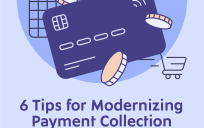Government is under pressure to update its legacy technology systems.
“Modernization is crucial for agencies to stay agile, secure, and responsive to evolving needs,” said Francisco Ramirez, Chief Architect of State and Local Government at Red Hat. “Agencies need to transform their legacy systems, leveraging contemporary technologies and methodologies.”
Getting there, however, has often proven problematic. Agencies struggle with budget constraints, and it can be difficult to demonstrate a practical return on investment for IT infrastructure upgrades.
Then there’s complexity. “You’re trying to modernize legacy systems that are still providing value to the agency,” Ramirez said. “How can you advance in this modernization journey, without affecting the services you’re delivering?”
Be Strategic
To get there, agencies need to formulate a modernization strategy. That starts with gathering not just IT leaders and other high-level decisionmakers, but also business-line leaders and end users.
“There has to be a plan in place, but you can’t put a plan out in front of people without first getting stakeholder involvement,” Ramirez said. “People need to feel like they are part of the process.”
As that plan comes together, it will make sense to articulate some clear criteria about what kinds of technologies will best advance the agency mission.
“You want to make sure that you’re leveraging scalable and adaptable technologies,” Ramirez said. “The technologies you put in place should allow you to future-proof your investment, and in some cases even allow you to leverage the current investments that you have.”
Cloud Talk
With those goals in mind, “most people will think: cloud,” he said. While that’s a part of the answer, it’s not the whole modernization solution. “Certain workloads need to run in certain places. You might want to keep some applications and services on premise, whether for security or other reasons.”
Open hybrid cloud offers a way forward, offering the ability to keep some applications in-house, and to scale when necessary in the cloud, without the risk of over-subscribing to services you aren’t using.
“It’s about finding that balance, understanding what you currently have and what you’re trying to achieve,” he said. That may mean “architecting the right solution to include cloud as a destination, but also making sure that the infrastructure you have on premise can support that as well.”
An Open Approach
Red Hat’s open source solutions can help agencies strike that balance.
“The beauty of open source is that you have a lot of collaborators working to solve problems, develop new solutions, and innovate faster,” Ramirez said. “At Red Hat, we take the innovation that comes from open source and provide it back to our customers in a way that is supported and enterprise-production ready.”
For one state health-and-human-services agency, Red Hat applied this approach to create a consolidated view for caseworkers across multiple, disparate systems — in just 30 days. “Now the caseworkers can enroll vulnerable citizens for services in days, instead of months,” he said.
That’s what effective modernization can do.
This article appears in our guide, “How to Kickstart Modernization.” For more ideas about how to make the case for modernization that agency leaders and legislators find compelling, download it here:






Leave a Reply
You must be logged in to post a comment.